
From bearnaise to veloute, sauces add flavor and texture to culinary creations. While some dishes call for thin, watery sauces--such as au jus for prime rib--many require a rich, creamy gravy to give it its signature name and flavor. To achieve the desired consistency, a thickener is often used. While baking powder is a kitchen staple that can be used to thicken a sauce in a pinch, it is more often used as a leavening agent in baked goods.
Baking Powder
Baking powder is made by combining sodium bicarbonate (baking soda) with one or more acid salts and cornstarch. Because cornstarch is useful as a thickener, baking powder can help liquids congeal, causing them to thicken. However, because the acid salts and the baking soda produce a gas when heated or added to liquids, the resulting sauce may bubble and have a bitter taste.
Using Baking Powder to Thicken Sauce
When using baking powder to thicken a sauce, first mix a small amount of the powder with enough cold liquid—water, milk, juice or broth--to form a paste. Slowly whisk the mixture into the liquid you want to thicken and heat until the sauce becomes opaque and creamy. If the sauce is not thick enough, repeat with another small amount of paste. Adding too much paste will turn your sauce into a pudding-like consistency. Don't add baking powder directly to hot liquids as lumps will form and the sauce will not thickening evenly. Because cornstarch loses its potency when mixed with acids, choose another thickener when sauce contains acidic ingredients such as lemon juice or tomatoes.
When to Use Baking Powder
Because baking powder creates a chemical reaction when included in a dough or batter, it is useful in baked goods. Without the gasses that are formed when the sodium bicarbonate interacts with the acid salts, foods will not rise. The gasses form tiny bubbles between the other food ingredients and give muffins, cakes, breads and cookies their light, airy texture. Due to the presence of cornstarch and its lower concentration of sodium bicarbonate, baking powder is used instead of baking soda to bind wet ingredients while adding leavening power. Double-action baking powder causes dough to rise when mixed and again when heated.
Alternatives
Starches and proteins are used more often than baking powder when thickening sauces. Flour, cornstarch, cheese and eggs are used in a number of recipes calling for rich or creamy sauces, such as stews, Asian dishes, Alfredo and hollandaise sauce. Flour can be combined with butter or another fat to create a roux, a thick paste that, when added to liquid, creates a substantial, finely textured sauce with a light wheat flavor. Adding cornstarch to a liquid produces a low-gloss, opaque sauce and does not impart noticeable flavor. Cheese and eggs both change the flavor and consistency of a sauce.
Related Articles
Can You Substitute Cornstarch for Flour?

How Long Can You Refrigerate Nacho ...

How to Thicken Sauce With Powdered ...

How to Make Black Bean Sauce
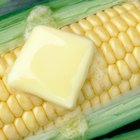
Common Food Emulsifiers

How to Retard Hair Growth

How to Substitute Potato Starch for ...
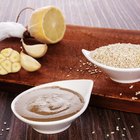
Calories in Tahini Sauce

Will Cream of Tartar Whiten Teeth?

Corn Starch Vs. Rice Flour As ...

How to Make Fish Taco Sauce
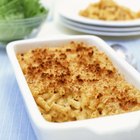
Why Does a Sauce Curdle?
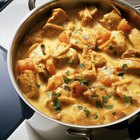
Cooking Yogurt Without Curdling It

Can You Use Bread Flour Instead of ...

How Can I Counteract the Sourness of a ...

What Can I Use to Thicken a Cream Sauce?
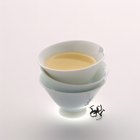
Substitute for Vanilla Custard Powder

Can You Deep-Fry Chicken Wings With ...

How to Thicken a Watery Beef Stew
How to Use Arrowroot to Thicken a Fruit ...
References
Writer Bio
When not working in her family-owned food and bar business, Viola Horne can almost always be found with a cookbook in one hand and a whisk in the other. Horne never tires of entertaining family and friends with both comfort food and unusual delicacies such as garlic cheese smashed potatoes and banana bacon pancakes.
Photo Credits
Ryan McVay/Photodisc/Getty Images